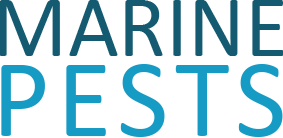Surveillance is essential in preventing the spread of marine pests in Australia.
All Australian jurisdictions collect data on the presence and quantity of marine pests:
- in the natural environment
- on marine infrastructure (such as wharves or pontoons)
- on vessels.
Learn how you can identify and report harmful marine pests.
Transcript - Biosecurity Basics - Shared Responsibility (docx 56KB)
National marine pest surveillance strategy
The Marine Pest Sectoral Committee (MPSC) has developed the National Marine Pest Surveillance Strategy. The strategy coordinates Australia’s marine pest surveillance activities. It outlines nationally agreed priorities for enhancing surveillance of marine pests in Australia between 2021 and 2026.
The National Marine Pest Surveillance Work Plan guides implementation of the surveillance strategy.
Marine pest detection methods
Natural marine environments can pose potential challenges for marine pest surveillance, including:
- cost and limitations of traditional underwater surveillance methods
- inaccessible and hazardous conditions
- visibility and identification of some marine pest species.
The MPSC is working to improve available detection methods. We encourage everyone to play a part in keeping Australia’s marine biosecurity safe.
Passive marine pest surveillance
Australia has a vast coastline. We rely on the public to assist in surveillance to help protect our marine environment. We rely on people who work or interact with the marine environment to help report marine pests.
Please report marine pests even if you’re unsure if it poses a threat.
Click on the links below to learn more about:
Molecular marine pest detection
We can detect the DNA of potential marine pests in the environment (eDNA) using:
- reproductive and waste material
- samples collected by alternative means, such as settlement arrays and filtering.
Molecular surveillance can improve detection sensitivity. This can significantly reduce the cost of marine pest surveillance.
Further work is needed to validate molecular detection methods.
The Department of Agriculture, Fisheries and Forestry funds projects to build and validate molecular detection methods in Australia.
The Guidelines for development and validation of assays for marine pests can help researchers improve molecular detection methods of marine pests.
The Compendium of introduced marine pest molecular studies relevant to Australia lists published molecular tools which support marine biosecurity research and surveillance in Australia.
eDNA project summary
A project summary highlighting the research outcomes and recommendations for effective eDNA surveillance is available:
Download
Project summary - Environmental DNA sampling and biophysical modelling for optimal detection of marine pests (PDF 425 KB)
Project summary - Environmental DNA sampling and biophysical modelling for optimal detection of marine pests (DOCX 576 KB)
If you are having trouble accessing this file, contact us for help.
If you want to know more, please see Current Trends in Biophysical Modeling of eDNA Dynamics for the Detection of Marine Species.
Visual marine pest surveillance
Scuba divers can perform traditional underwater visual surveillance. But diving activities can be expensive, impractical, or unsafe in some locations.
We are helping to develop visual surveillance methods such as Remote Operated Vehicles (ROVs). ROVs are underwater vehicles operated by a pilot on the water's surface.
ROVs have many benefits including:
- capturing underwater images in areas that are unsafe for divers
- cheaper and safer alternatives for visual surveillance.
The Review and Enhancement of Remotely Operated Vehicles for Marine Pest Surveillance document is available. The review outlines how ROVs can be used to improve surveillance for marine pests.
Surveillance resources for priority marine pest species
The MPSC has developed a list of national priority marine pest species for surveillance. The list contains suitable surveillance methods to detect these pests.
Download
List of priority marine pest species for surveillance - March 2024 (XLSX 30 KB)
If you are having trouble accessing this file, contact us for help.
Suspected marine pest species not included on the list should still be reported.
The list is updated when required.

